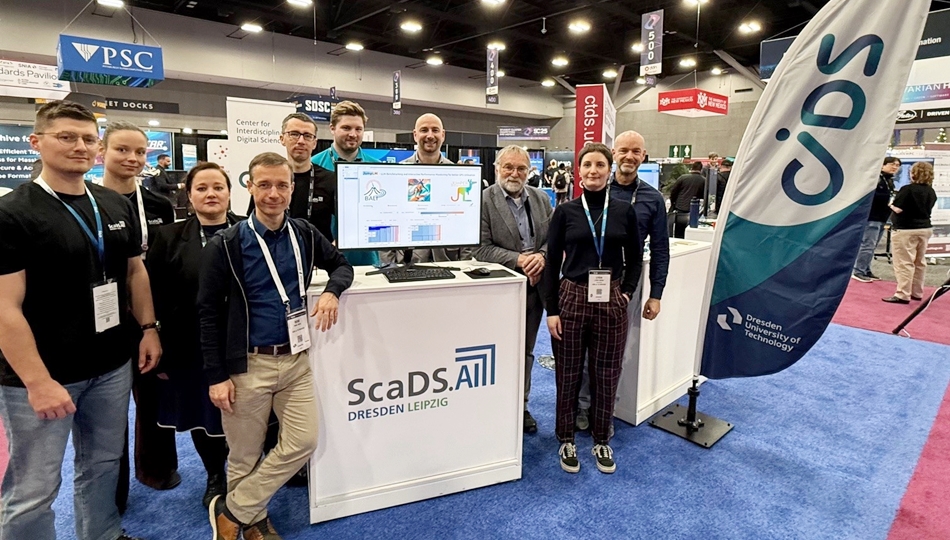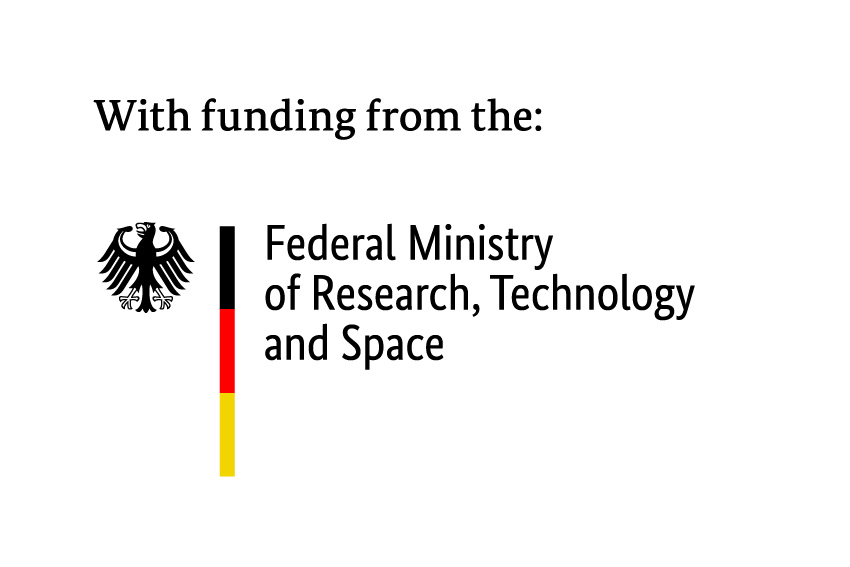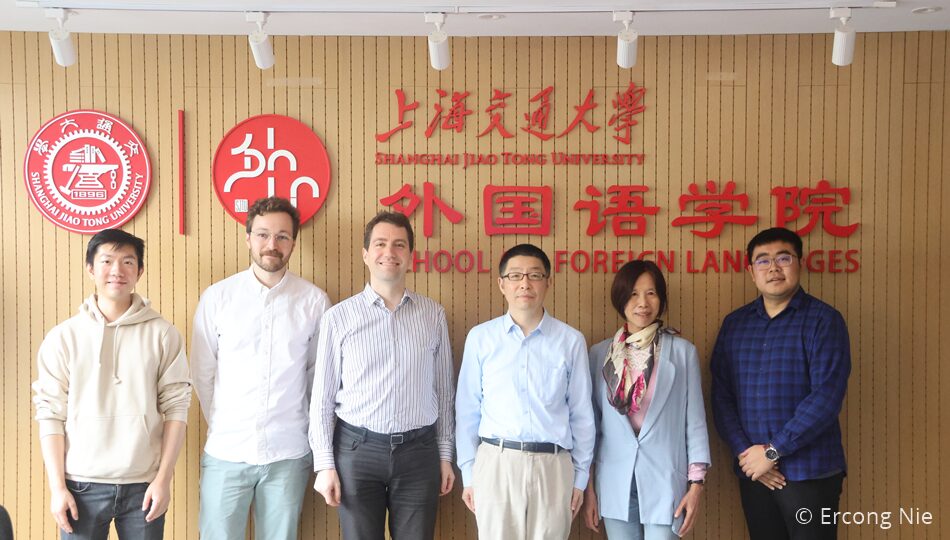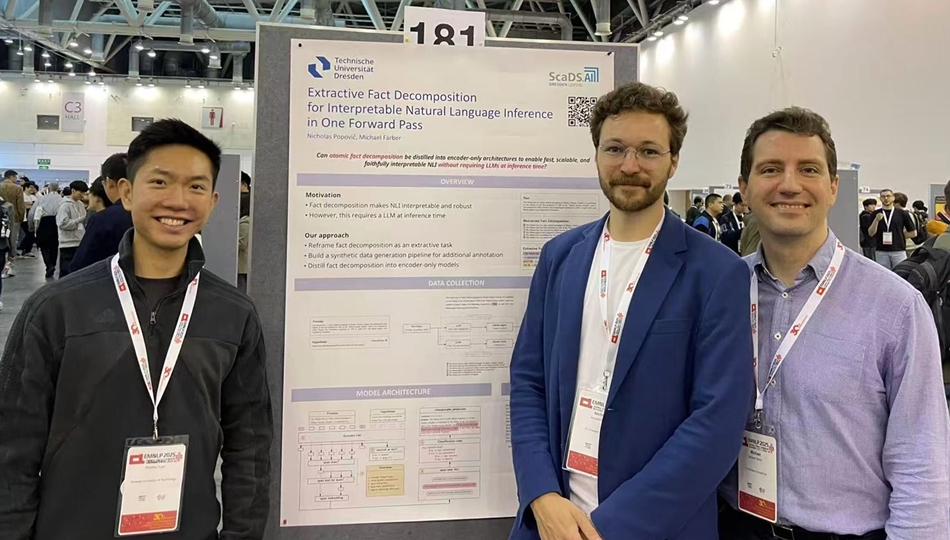
November 21, 2025
SC25 with ScaDS.AI Dresden/Leipzig, SpiNNcloud, and ZIH

From November 16–21, 2025, ScaDS.AI Dresden/Leipzig, the Center for Information Services and High Performance Computing (ZIH), and SpiNNcloud joined the International Conference for High Performance Computing, Networking, Storage, and Analysis (SC25).
Contributions
Booth activities
At booth #513, ScaDS.AI Dresden/Leipzig, ZIH, and SpiNNcloud presented their work:
ScaDS.AI Dresden/Leipzig
We showcased a selection of demonstrators to give an inspring insight into the research topics of ScaDS.AI Dresden/Leipzig:
- asanAI
asanAI is a Machine Learning software that can be used without prior knowledge on the topic. Users can train their own models on images, webcam data, CSV files, or any arbitrary tensor data without ever leaving the browser. Learn more about asanAI here. - JUmPER (Jupyter meets Performance)
JUmPER is a dedicated kernel for the Jupyter environment, providing both coarse-grained performance monitoring and fine-grained analysis capabilities for Python user code. Read more about JUmPER here. - JumpLM
JumpLM is a Jupyter environment based on JUmPER and BALI (Benchmark for Accelerated Language Model Inference) for benchmarking language model inference with interactive performance plots.
ZIH
ZIH set the focus on their well-established tools for performance analysis:
- Vampir
Vampir is a framework for performance analysis, which enables developers to quickly study program behavior. Performance data obtained from a parallel program run can be analyzed with a collection of specialized performance views. Check out Vampir here. - PIKA
PIKA is a hardware performance monitoring stack to identify inefficient HPC jobs that now comes with a new global job filter. It allows visualizations to be dynamically configured based on job-specific properties. Find more information on PIKA here.
SpiNNcloud
SpiNNcloud showcased their SpiNNcloud Server Board with 48 SpiNNaker2 chips.

Sofa talks
We discussed the latest trends in LLM infrastructure and hosting, as well as task-specific alignments. We had impulses from ScaDS.AI Dresden/Leipzig, the Indiana University and the ChatHPC group from Oak Ridge National Laboratory. The open exchange was used to trigger discussions and identify synergies.
Speaker: Dr. Taras Lazariv (ScaDS.AI Dresden/Leipzig)
Speaker: Lena Jurkschat and Elias Werner (ScaDS.AI Dresden/Leipzig)
Traditional HPC architectures face fundamental limitations in energy efficiency, sparse computation, and stochastic algorithms – precisely the domains where brain-inspired neuromorphic computing excels. We explored how neuromorphic principles applied at supercomputer scale overcome Amdahl’s law constraints, enable orders-of-magnitude improvements in optimization and Monte Carlo simulations, and bridge the computational gap between conventional HPC and quantum computing through massively parallel, event-driven architectures that natively support high-dimensional sparsity.
Speaker: Dr. Hector Gonzalez (SpiNNcloud)
We explored opportunities for interactive HPC, introducing the Research Desktop and its deployment at Indiana University. In addition, alternative approaches, such as JupyterHub, were discussed with insights contributed by ZIH and ScaDS.AI Dresden/Leipzig.
Speaker: Robert Henschel (Indiana University) and Elias Werner (ScaDS.AI Dresden/Leipzig)
Birds of Feather
As AI and post-exascale demands reshape high-performance computing, and neuromorphic systems push the boundaries of brain-inspired efficiency, a key question emerges: Does HPC need neuromorphic architectures to stay sustainable – or is neuromorphic computing reliant on HPC infrastructure to scale competitively? This BoF session aimed to unite researchers, practitioners, and industry leaders to explore overlapping interests between neuromorphic computing and HPC. The session consisted of a concise overview of the state of neuromorphic computing, insights from a diverse panel of experts, and an interactive discussion on mutual benefits and future collaboration.
Lead: Craig Vineyard (Sandia National Labs), incl. Hector Gonzalez (SpiNNcloud Systems) and others
SC25
Established in 1988, the SC conference series has become a central annual meeting point for the international HPC community. This year’s edition of the conference, SC25, took place in St. Louis, Missouri under the motto “HPC ignites”. Learn more about the conference on the official website.






